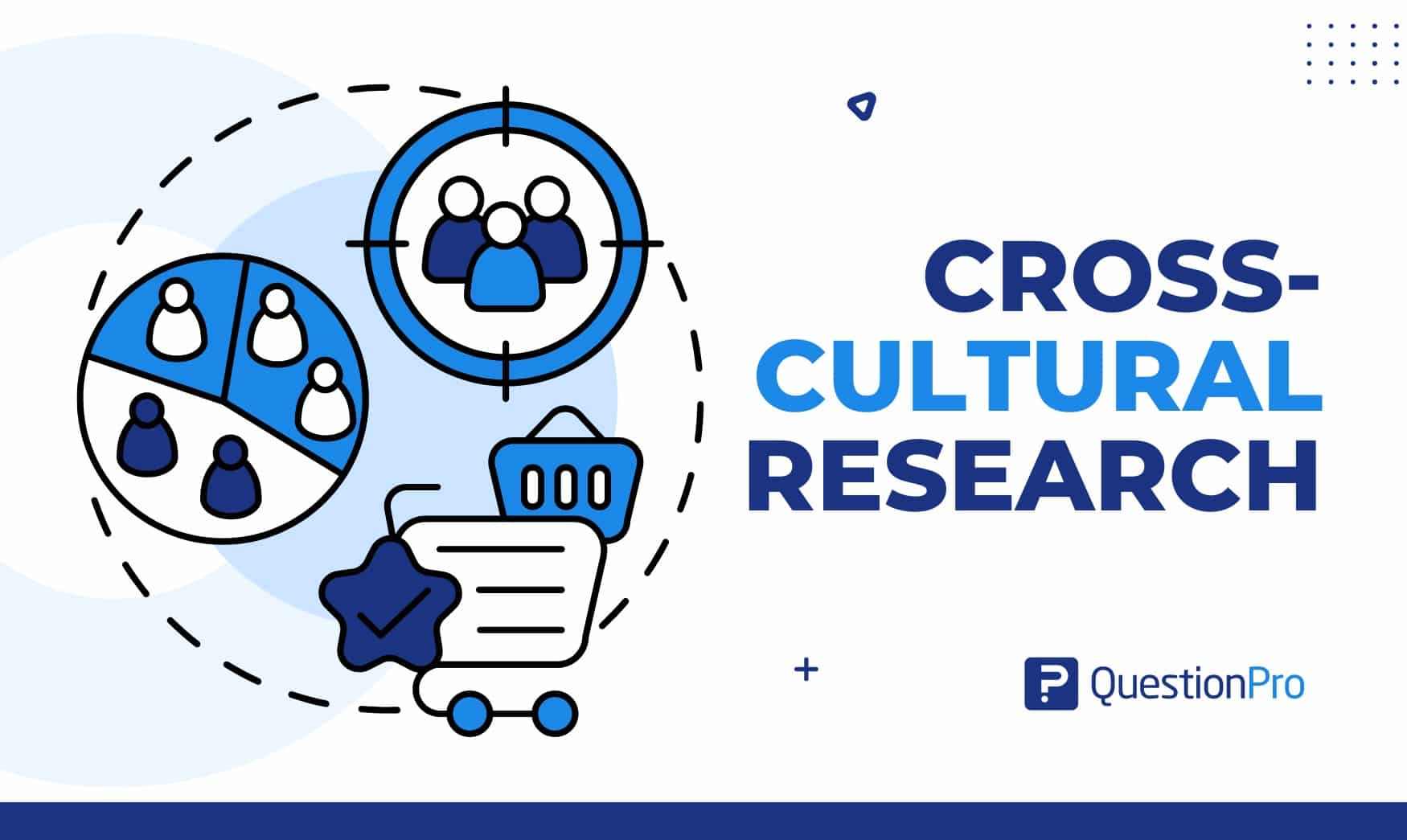
Understanding cultural differences isn’t just a nice-to-have; it’s essential. As a business leader navigating global markets, as an educator working with diverse students, or simply curious about how culture shapes our lives, cross-cultural research offers invaluable insights.
This field of study digs deep into how people from different cultures think, behave, and interact, revealing patterns that can transform how we approach everything from communication to problem-solving.
But how do researchers tackle the complexities of studying such diverse groups? What challenges do they face, and what fascinating discoveries have they made along the way? In this blog, we’ll explore cross-cultural research methods, challenges, and key findings, giving you a front-row seat to this fascinating and ever-relevant field.
What is Cross-Cultural Research?
Cross-cultural research explores and compares different cultures to understand how cultural factors shape people’s behaviors, thoughts, and social practices.
Formerly behavior science research, cross-cultural research now extends beyond individual behaviors to explore how cultural contexts influence diverse social practices and interactions globally.
It involves studying and analyzing various cultures to uncover how cultural differences and similarities influence human behavior and social dynamics. It helps us see beyond our cultural perspective and gain insights into how people in different parts of the world live and interpret life.
Example:
An example is when we want to understand how different cultures celebrate the New Year. A cross-cultural study would involve studying various New Year traditions worldwide, such as fireworks in the U.S., the Lunar New Year celebrations in China, and the unique customs in Brazil. By comparing these practices, we can learn what different cultures value and how they express their hopes and dreams for the coming year.
Why Cross-Cultural Research Important for Your Business
Cross-cultural study is essential for businesses operating in a global marketplace because it provides critical insights into how cultural differences impact various aspects of business. Here’s why it’s important:
1. Helps to Understand Consumer Preferences
Cross-cultural research helps businesses adapt to meet consumers’ specific needs and preferences in different cultures.
- Products
- Services
- Marketing strategies
It also improves the chances of successful market entry by aligning offerings with local tastes and expectations.
2. Offer Effective Communication and Marketing
This research ensures that marketing messages, advertisements, and brand perception are culturally appropriate and resonate with local audiences, avoiding potential misunderstandings or offenses. It allows businesses to create marketing campaigns that appeal to diverse cultural groups, increasing customer engagement and effectiveness.
3. Improve Customer Experience
Cross-cultural research provides insights into cultural expectations for customer service, helping businesses create their support approaches to different cultural norms. It Increases customer satisfaction by addressing cultural nuances in service delivery and interactions.
Cross-cultural research aids in understanding different negotiation styles and business practices across cultures, which is crucial for successful international deals and partnerships. This research helps businesses navigate local regulations and business practices that vary from one culture to another.
5. Build Stronger Global Teams
Promotes better teamwork and collaboration among employees from diverse cultural backgrounds by creating mutual understanding and respect. It also enhances leadership and management practices to effectively lead teams in different cultural contexts.
8. Facilitate Global Expansion
Cross-cultural research assists in developing strategies for entering and establishing a presence in new international markets by understanding local cultural dynamics. It helps to
- Improves the ability to build successful partnerships
- Alliances with local businesses and stakeholders.
Methods of Cross-Cultural Research
By employing a cross-cultural method, scholars and businesses can gain valuable insights into how culture shapes experiences and interactions. Here, we will explore the key methods used in cross-cultural study and their applications.
1. Surveys and Questionnaires
Surveys and questionnaires are widely used in cross-cultural research to collect quantitative data from many participants across different cultures. These tools help researchers gather information on attitudes, beliefs, and behaviors.
How It Works:
- Design: Develop culturally relevant questions and ensure they are translated accurately to avoid misunderstandings.
- Distribution: Administer the survey across multiple cultural groups.
- Analysis: Compare responses to identify cultural differences and similarities.
Example: A survey examining attitudes towards work-life balance across different countries can reveal how cultural values influence workplace expectations and employee satisfaction.
2. Interviews
Interviews provide in-depth qualitative data and allow researchers to explore individuals’ experiences and perspectives in detail. They are particularly useful for understanding complex cultural phenomena.
How It Works:
- Format: Conduct structured, semi-structured, or unstructured interviews depending on the research goals.
- Cultural Sensitivity: Be aware of cultural norms related to communication and interaction.
- Analysis: Analyze interview transcripts to identify themes and cultural patterns.
Example: Interviews with business professionals from different countries can uncover how cultural values influence negotiation styles and decision-making processes.
3. Observational Studies
Observational studies involve watching and recording behaviors in natural settings without interfering. This method provides insights into real-world cultural practices and social interactions.
How It Works:
- Setting: Choose a naturalistic or controlled setting where cultural behaviors can be observed.
- Data Collection: Record behaviors and interactions while taking note of cultural context.
- Analysis: Analyze observations to understand cultural norms and practices.
Example: Observing social gatherings in various cultures can help researchers understand cultural norms around hospitality, etiquette, and group dynamics.
5. Experiments
Experiments in cross-cultural research test hypotheses about how cultural factors affect behavior by manipulating a dependent variable and observing outcomes.
How It Works:
- Design: Create experiments that are culturally relevant and ensure that experimental conditions are equivalent across cultures.
- Implementation: Conduct the experiment in different cultural settings.
- Analysis: Compare results to determine how cultural factors influence the outcomes.
Example: An experiment testing the impact of different advertising messages on consumer behavior across cultures can reveal how cultural values affect marketing effectiveness.
6. Case Studies
Case studies involve in-depth analysis of a single or a few cultural cases to explore specific phenomena or issues in detail.
How It Works:
- Selection: Choose cases that represent significant cultural practices or social issues.
- Data Collection: Use multiple methods such as interviews, observations, and document analysis.
- Analysis: Provide a detailed account of the case, highlighting cultural influences.
Example: A case study of a successful international joint venture can provide insights into how cultural compatibility and differences affect business partnerships.
Applications of Cross-Cultural Research
Understanding how cultural differences and similarities influence human behavior can lead to more effective strategies, policies, and practices. Here’s a look at some key applications of cross-cultural research:
1. Global Business Strategy
Cross-cultural research helps businesses to:
- Create their products
- Improve their services
- Set their marketing strategies
It also helps to align with local cultural preferences and market conditions. It provides insights into how cultural factors influence purchasing decisions, enabling companies to design more effective products and marketing campaigns. Additionally, it improves understanding of negotiation styles and business practices across different cultures.
2. Marketing and Advertising
In marketing and advertising, cross-cultural research guides the creation of messages and campaigns that are sensitive to and respectful of cultural norms. This approach helps businesses position their brands in a way that appeals to diverse cultural groups, enhancing brand acceptance and customer loyalty.
3. Human Resources and Management
In human resources, understanding cultural differences in communication styles, work ethics, and leadership preferences helps in managing a multicultural workforce more effectively. It also informs the design of cross-cultural training programs, which are crucial for employees working in diverse teams and international settings.
4. Product Development and Design
Designing products for a global market involves more than just functionality; it requires an understanding of cultural differences such as.
- How can cross-cultural research help identify local preferences and needs for product design?
- What cultural factors should be considered to ensure a product is intuitive for users from different backgrounds?
- How can understanding cultural differences enhance user satisfaction and product acceptance?
Cross-cultural research helps ensure that products are build to various cultural contexts, making them more intuitive and user-friendly for people around the world. By addressing these cultural factors, designers can create products that resonate with a diverse audience and enhance overall satisfaction.
5. Healthcare and Public Health
In healthcare and public health, cross-cultural research informs the development of practices and policies that respect diverse cultural beliefs and practices. It also guides the creation of effective health education and promotion campaigns build to different cultural contexts.
6. Education
In education, cross-cultural research supports the development of inclusive curricula that reflect diverse cultural perspectives and address the needs of students from various backgrounds. It also enhances teaching methods by incorporating culturally relevant materials and approaches, improving educational outcomes for students from different cultures.
7. Policy Making
Cross-cultural research assists in crafting policies that consider cultural diversity and address the needs of different cultural groups. This leads to more equitable and effective governance. Additionally, it enhances diplomatic efforts by creating mutual understanding and respect between nations through awareness of cultural differences and commonalities.
8. Research and Academic
In academic research, cross-cultural studies provide a foundation for:
- Comparing cultural phenomena across societies.
- Contributing to a broader understanding of human behavior and social practices.
It also informs the development of theories that account for cultural diversity, enriching academic knowledge and research across various fields.
Challenges of Cross-Cultural Research
Conducting cross-cultural study comes with a set of complex challenges that can affect the accuracy and validity of findings. Understanding these challenges is essential for researchers aiming to produce reliable and respectful research outcomes. Here’s a closer look at the key challenges and how to navigate them.
1. Cultural Bias and Ethnocentrism
Researchers might unintentionally view other cultures through the lens of their own culture, which can skew the results. For example, they might assume their own way of doing things is the best or only way.
Researchers should be aware of their own biases and try to understand the culture they’re studying from the inside out. Working with local experts can help provide a more accurate perspective.
2. Language and Translation Issues
Translating research materials like surveys and interviews can be tricky. Words and meanings might get lost or changed during translation.
Use professional translators who understand both the language and cultural context. Checking translations with back-translation (translating back to the original language) and testing them before use can help ensure they’re accurate.
3. Methodological Differences
Different cultures might have different ways of doing research or different norms. What works well in one culture might not be suitable in another.
Adapt research methods to fit the cultural context while keeping scientific standards. Combining different methods, like surveys and interviews, can provide a fuller picture.
4. Data Interpretation and Analysis
Understanding data from different cultures can be challenging. Without cultural knowledge, it’s easy to misinterpret findings.
Combine quantitative data (numbers) with qualitative insights (detailed information) for a better understanding. Collaborate with local experts to ensure accurate interpretation.
How QuestionPro Helps in Cross-Cultural Research?
Cross-cultural research helps us understand how people from different cultures think and behave. Doing this well can be tricky, but QuestionPro offers tools that make the process easier and more effective. Here’s how QuestionPro helps researchers tackle the challenges of studying diverse cultures:
1. Multi-Language Surveys
One of the critical aspects of cross-cultural study is the ability to reach participants in their native languages. QuestionPro supports surveys in multiple languages, allowing researchers to create and distribute surveys that cater to diverse linguistic groups. This feature ensures that participants fully understand the questions, leading to more accurate and reliable data.
2. Cultural Adaptation
QuestionPro allows for the cultural adaptation of surveys. This involves more than just translating the text; it includes adjusting the content to ensure that it is culturally relevant and appropriate. QuestionPro’s platform supports the customization of survey content to match cultural contexts, enhancing the validity of the research.
3. Global Reach with Online Panels
QuestionPro provides access to a vast network of online panels, enabling researchers to target specific cultural groups across the globe. This feature is particularly valuable for comparative studies that require large and diverse sample sizes. Researchers can filter participants based on demographic criteria such as:
- Age
- Gender
- Location and more
4. Data Segmentation and Analysis
Once data is collected, QuestionPro offers advanced data segmentation and analysis tools that allow researchers to compare responses across different cultural groups. These tools make it easy to identify patterns, trends, and significant differences between cultures. The platform supports:
- Cross-tabulation
- Filtering
- Advanced statistical analysis
It helps researchers draw meaningful insights from their data.
5. Cultural Sensitivity in Survey Design
QuestionPro provides guidelines and best practices for designing surveys that are culturally sensitive. This includes advice on question-wording, avoiding cultural biases, and using neutral language. The platform’s templates and question libraries can also be created to fit the cultural context of the comparative study, ensuring that the research is respectful and considerate of cultural differences.
6. Real-Time Collaboration
Cross-cultural research often involves collaboration between researchers from other countries or regions. QuestionPro’s platform supports real-time collaboration, allowing teams to work together on:
- Survey design
- Data collection
- Analysis
This feature creates international cooperation and ensures that all team members are on the same page throughout the research process.
7. Mobile-Optimized Surveys
In many cultures, especially in developing regions, mobile devices are the primary means of accessing the internet. QuestionPro’s mobile-optimized surveys ensure that participants can easily respond to surveys using their smartphones or tablets, increasing response rates and making it easier to reach diverse cultural groups.
Conclusion
Cross-cultural research is a powerful tool for understanding the diversity of human behavior and the ways in which culture shapes our lives. By using a variety of methods and being mindful of the challenges involved, researchers can uncover valuable insights that contribute to a more inclusive and culturally aware world. As our world becomes increasingly interconnected, the importance of cross-cultural study will only continue to grow.
QuestionPro is an invaluable tool for cross-cultural research, offering features that address the unique challenges of studying diverse cultures. QuestionPro equips researchers with the tools they need to conduct rigorous and culturally sensitive cross-cultural studies. Researchers can gain deeper insights into cultural differences and contribute to a better understanding of global diversity. Contact with QuestionPro to learn more!







